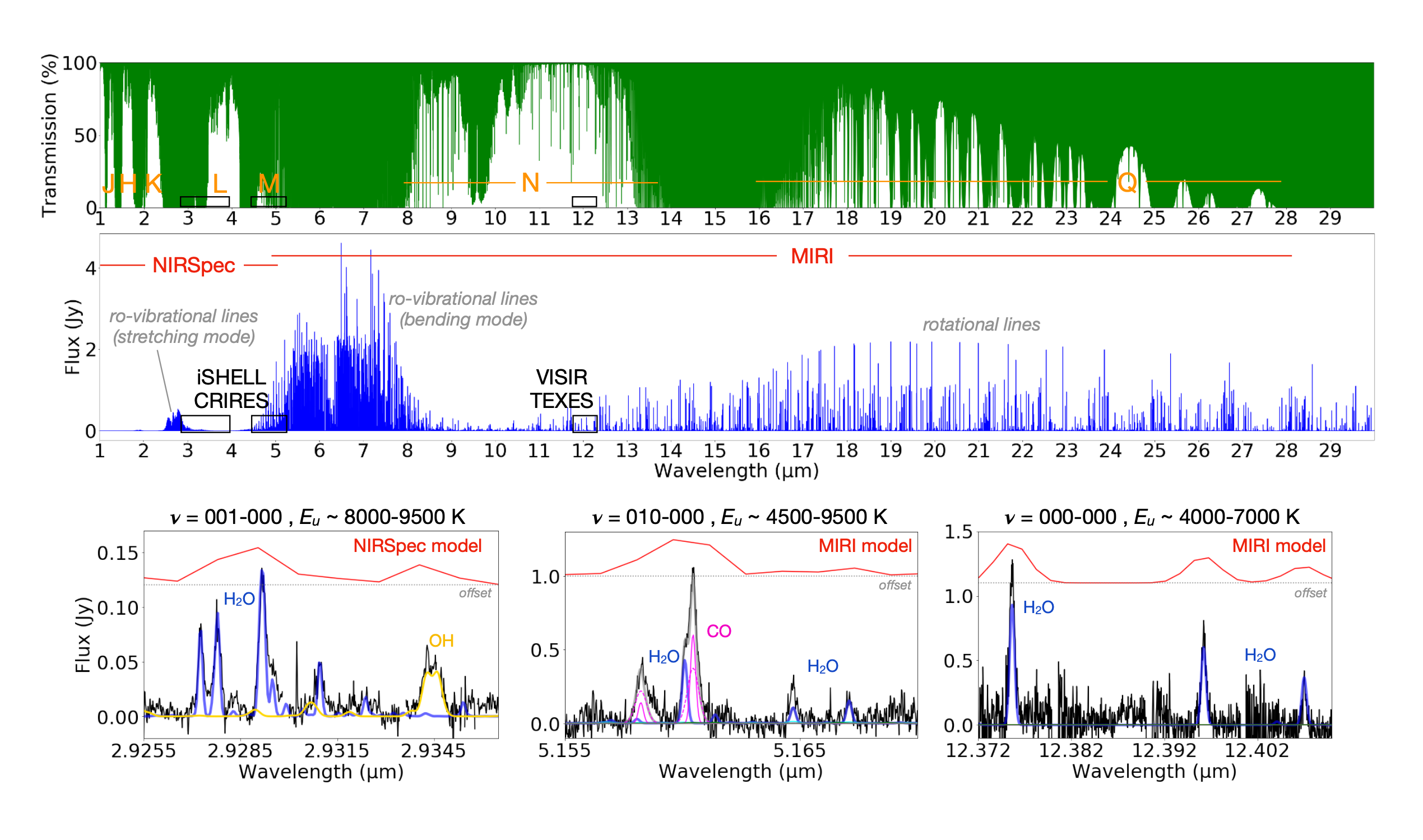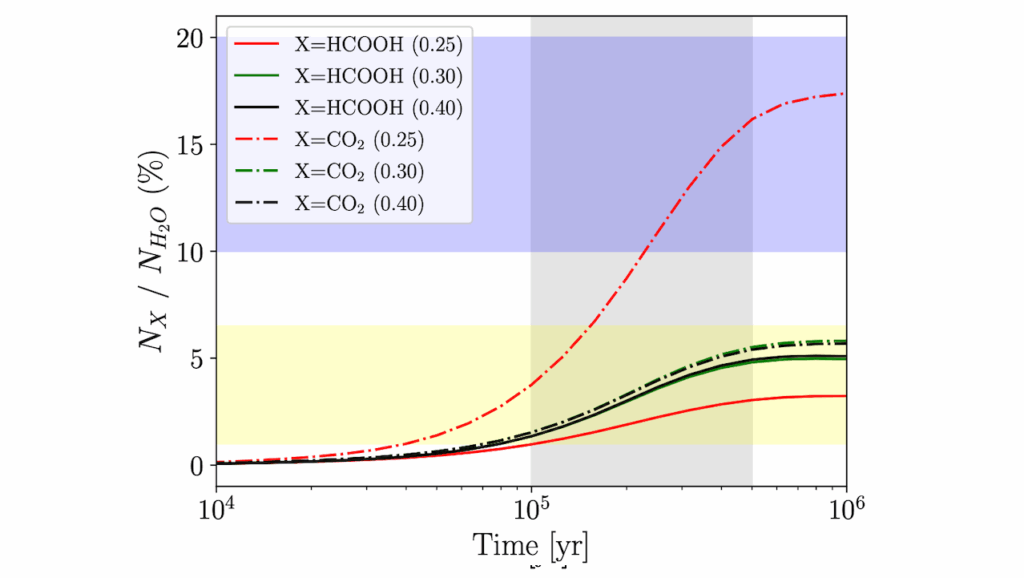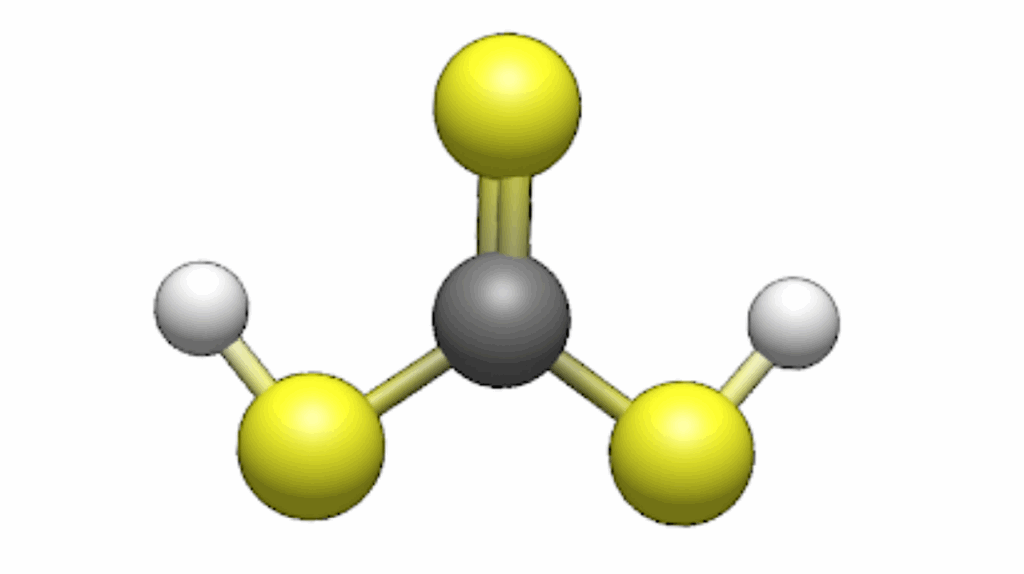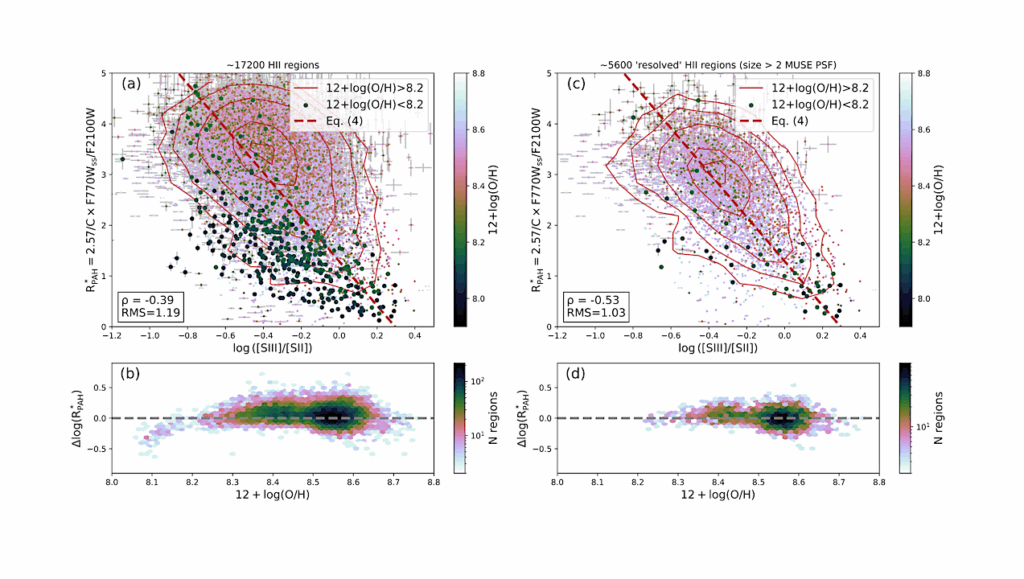The Kinematics And Excitation Of Infrared Wwater Vapor Emission From Planet-forming Disks: Results From Spectrally-resolved Surveys And Guidelines For JWST Spectra

This work presents water emission spectra at wavelengths covered by JWST (2.9-12.8 μm) as spectrally-resolved with high resolving powers (R = 30,000-100,000) using ground-based spectrographs.
Two new surveys with iSHELL and VISIR are combined with previous spectra from CRIRES and TEXES to cover parts of multiple ro-vibrational and rotational bands observable within telluric transmission bands, for a total of 85 disks and ≈160 spectra. The general expectation of a range of regions and excitation conditions traced by infrared water spectra is for the first time supported by the combined kinematics and excitation as spectrally resolved at multiple wavelengths.
The main findings from this analysis are: 1) water lines are progressively narrower going from the ro-vibrational bands at 2-9 μm to the rotational lines at 12 μm, and partly match a broad (BC) and narrow (NC) emission components, respectively, as extracted from ro-vibrational CO spectra; 2) rotation diagrams of resolved water lines from upper level energies of 4000-9500 K show curvatures indicative of optically thick emission (≈1018 cm−2) from a range of excitation temperatures (≈ 800-1100 K); 3) the new 5 μm spectra demonstrate that slab model fits to the rotational lines at >10μm strongly over-predict the ro-vibrational emission bands at <9μm, implying non-LTE excitation.
We discuss these findings in the context of a emission from a disk surface and a molecular inner disk wind, and provide a list of detailed guidelines to support the analysis and interpretation of spectrally-unresolved JWST spectra.
Andrea Banzatti, Klaus M. Pontoppidan, José Pérez Chávez, Lindsey Diehl, Colette Salyk, Simon Bruderer, Greg J. Herczeg, Ilaria Pascucci, Sean Brittain, Stanley Jensen, Arthur D. Bosman, Ewine F. van Dishoeck, Sierra Grant, Inga Kamp, Andres Carmona, Karin I. Öberg, Geoff A. Blake, Michael R. Meyer, Caleb Wheeler
Comments: Posted on arXiv as submitted to AJ, for immediate access by teams working on the analysis of JWST spectra
Subjects: Earth and Planetary Astrophysics (astro-ph.EP); Solar and Stellar Astrophysics (astro-ph.SR)
Cite as: arXiv:2209.08216 [astro-ph.EP] (or arXiv:2209.08216v1 [astro-ph.EP] for this version)
Submission history
From: Andrea Banzatti Dr.
[v1] Sat, 17 Sep 2022 02:13:15 UTC (9,110 KB)
https://arxiv.org/abs/2209.08216
Astrobiology,








